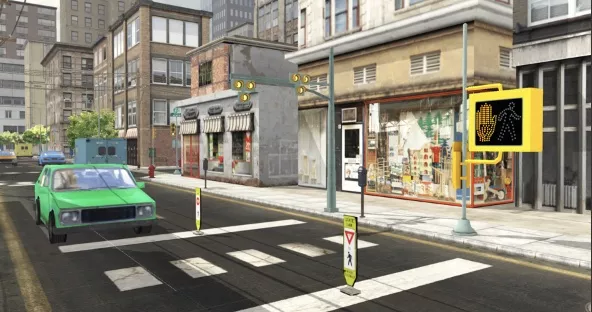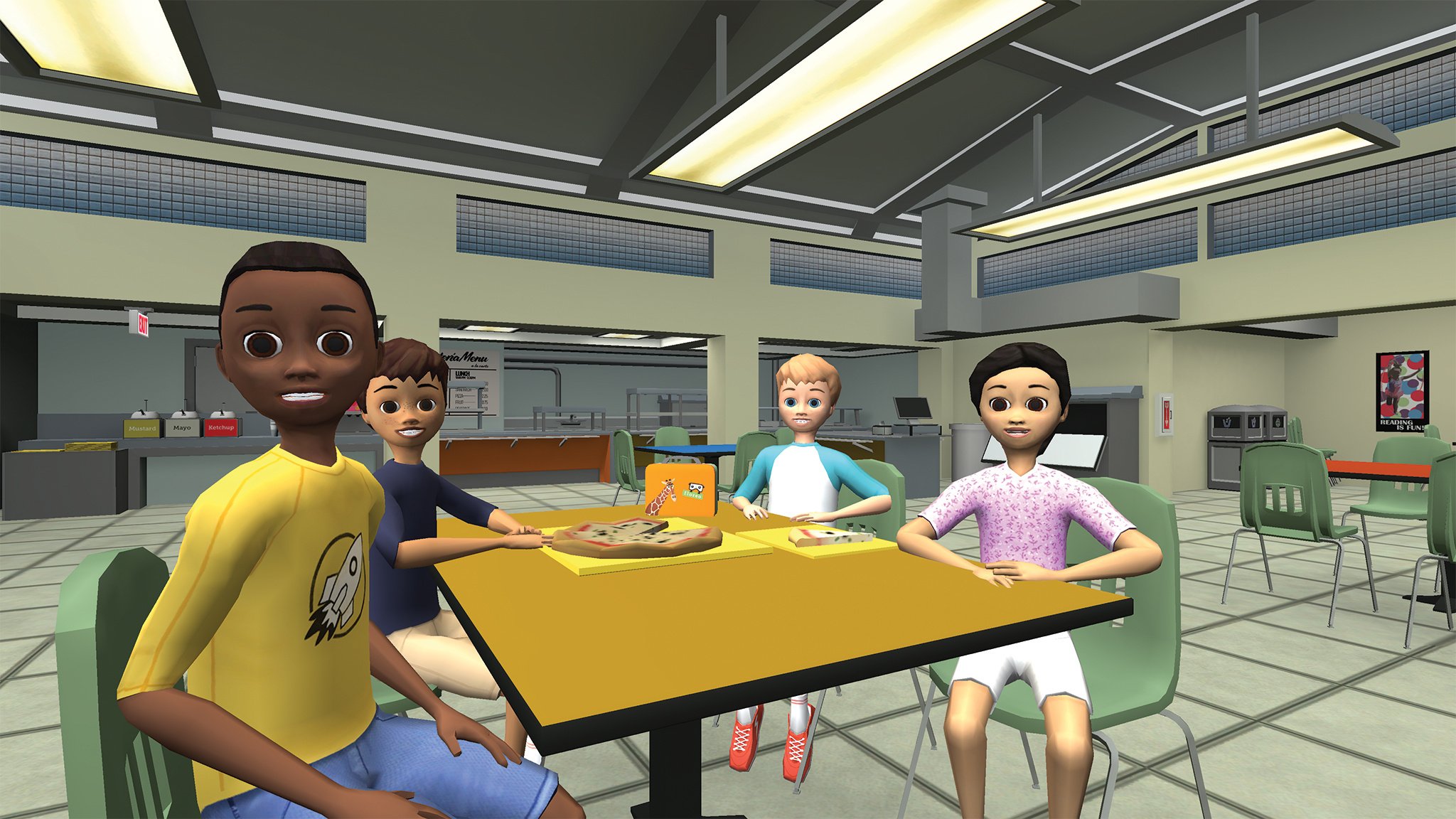One of the advantages that virtual reality can offer is to provide well-timed visual cues in the virtual space to help Learners know where to look. Floreo takes advantage of that in many of the lessons to help people know where the salient objects are in the environment, to let them know if they have to wait a short amount of time for the next event, and to understand how to navigate a space. These visual cues in Floreo have been incorporated such that they are sometimes automatic and in other instances may be activated by the Coach who is helping the Learner.
Floreo started introducing these visual cues into some of our earliest lessons. We have reward stars that we have in lessons such as: Emma is Pointing, Whose Turn is it to Push the Swing?; and Get Ready for Class when the Learner completes a task successfully. Additionally, we introduced some animations to stationary objects to let the Learners know that if they look at a particular object, something will happen. For example, in Watch it Go, when the Learner fixes gaze on an animal the animal will go into 'ready' mode and begin jumping around before it moves. We continued to incorporate those types of cues in the Teamwork lessons (Teamwork: Cooperative Work, Teamwork: Communication, Teamwork: Collaboration & Compromise) where the Learner has to look at the display table and find the color can that matches the rectangle that appears on the table. In the spatial concepts lessons (Spatial Concepts: Up & Down, Spatial Concepts: In & Out, Spatial Concepts: Left & Right, Spatial Concepts: Where is the Train?), we include the written words to show locations such as up, down, left, right, between, behind, and many more. In the Floreo lesson Yoga Poses, the Learner is given a visual representation of the abstract concept of the Yoga pose to facilitate the Coach's ability to explain why the pose carries a particular name.
We can also make these visual cues dynamic. For some Learners, figuring out what it means to look for cars before crossing the street in real life can be quite challenging. In Lucky Corner, 3-Way Stop Sign, we provide a moving arrow to lead the Learner's focus down the street to the left, to the right and then to the left again so they can begin to learn that routine. In lessons such as Scan the Store Shelves, the Coach can highlight the items on the shelf to help the Learner develop a routine for looking on store shelves to find an item.
In Floreo, we use green and yellow circles to show Learners that they should pay attention to an object in the scene and will need to wait a few moments while the circle closes. For example, in Time Management: Multitasking, when the Learner looks at the correct machine (corresponding with a to-do list), a green circle gradually appears. In some cases, this is the only step for this task. If so, that task will get marked as complete and get crossed off the list. In other cases, the green circle is followed by the appearance of a yellow circle. The yellow circle indicates the task will require some additional time. The Learner is asked to move to the next item on the to-do list while the first machine "warms up" and will be asked to return to the first item later in order to complete it.
We recently updated some of our movement visual cues. In the past, a white or pink orb has appeared. In our new lessons that involve movement (as well as some of our old lessons), Learners will now see a circle on the ground, with an arrow pointing toward the circle. Check out these new visual effects in Security Savvy: TSA Search and Questions and Pool Party Safety: The Basics.
These kinds of visual supports have long been a staple of teaching new skills to the neurodiverse. Furthermore, visual supports can be quite helpful towards generalization of skills. Virtual reality offers a world of opportunities to incorporate these specialized visual cues into environments where it would be nearly impossible to do in real life.
Floreo's Director of Applied Digital Therapy, Rita Solórzano MA, CCC-SLP, is a Speech Language Pathologist with over 30 years of experience.






-1.png?width=550&height=250&name=Untitled%20(3)-1.png)